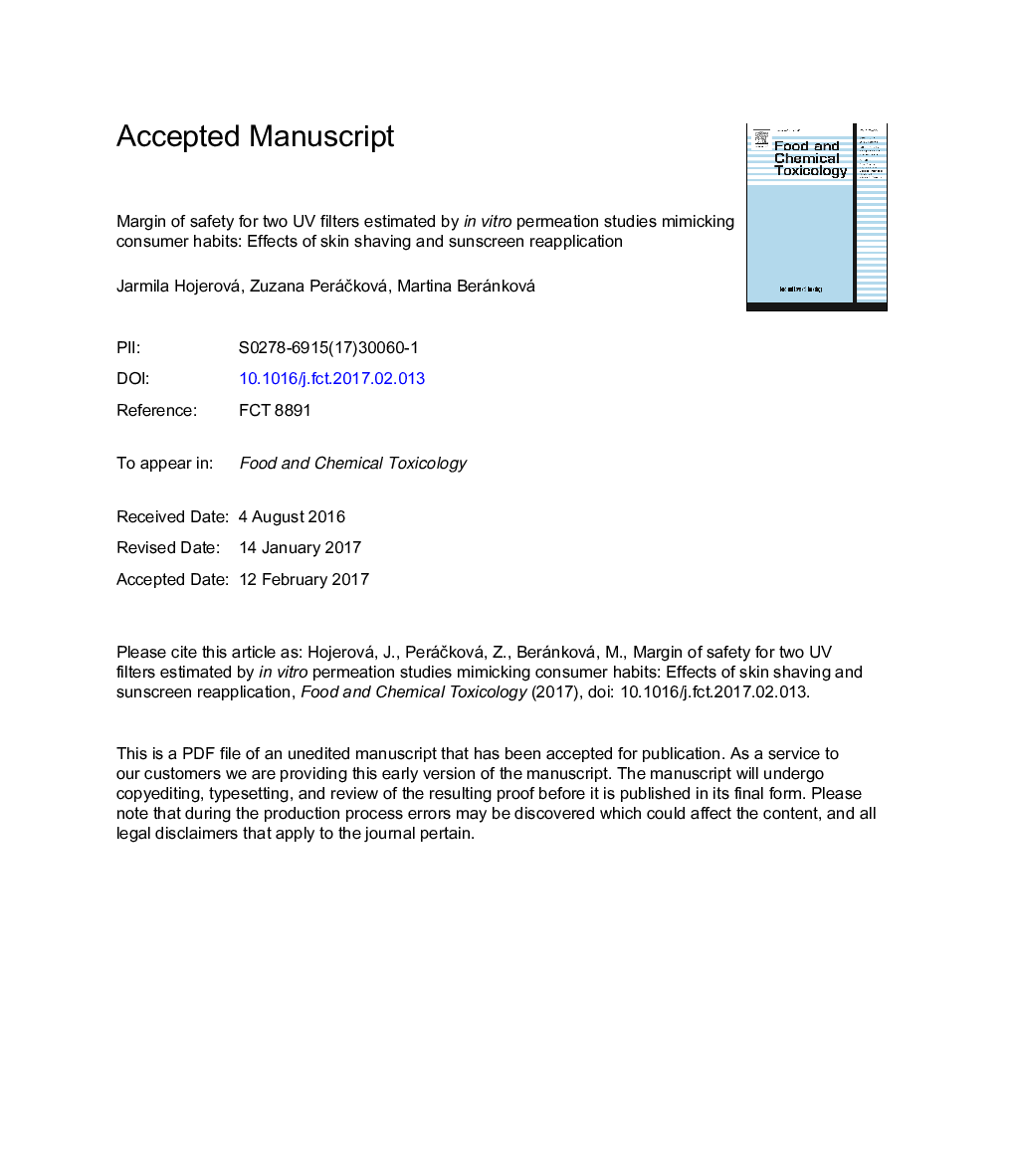| Article ID | Journal | Published Year | Pages | File Type |
|---|---|---|---|---|
| 5560221 | Food and Chemical Toxicology | 2017 | 50 Pages |
Abstract
Sunscreens are intended to work on the skin. To be both efficient and safe, the lowest possible percutaneous permeation of UV filters should occur. The potential for systemic absorption of Benzophenone-3 (BP3, 10%) and Ethylhexyl Triazone (EHT, 5%) in a silicone-based water-in-oil emulsion was assessed in vitro using a full-thickness porcine-ear skin mimicking in-use conditions. The estimated Systemic Exposure Dose (SED) after the sunscreen application at 1.0 mg/cm2 for 6 h (i) on the face; (ii) on the whole-body skin, was (i) 136 and 30; (ii) 4200 and 933 μg/kg_bw/d for BP3 and EHT, respectively. Reapplication does not mean the double risk; the SED values were only 1.40-1.37-fold greater. Skin shaving increased BP3 and EHT bioavailability 1.38 and 1.80-fold, respectively. Margin of Safety values were estimated according to guidelines applicable for European Union. For three realistic exposure scenarios, MoS of 48, 34 and 34 for BP3 in the sunscreen applied on the whole-body indicate some concerns regarding the safety for consumers (MoS<100). Despite undeniable functional benefits in sunscreens, BP3 concentration allowed in EU cosmetics (max. 10%) should be reviewed, especially in products intended for whole-body applications. The development of new UV filters should be focused on their specific physico-chemical properties.
Keywords
PCPsnot assessedsystemic exposure dosereceptor fluidFull-thickness skinFDAPOWBP3ECHANOAELMOSSCCsEHTFTSOECDCIDUNDLOQEFSATECSPFASAW/Owater-in-oilEuropean Chemicals AgencyEuropean Food Safety AuthorityU.S. Food and Drug AdministrationHuman exposure assessmentUltravioletBenzophenone-3Margin of safetyDermisOrganisation for Economic Co-operation and DevelopmentSun protection factorStratum corneumlimit of quantificationNo observed adverse effect levelsedEuropean Commission
Related Topics
Life Sciences
Agricultural and Biological Sciences
Food Science
Authors
Jarmila Hojerová, Zuzana PeráÄková, Martina Beránková,
